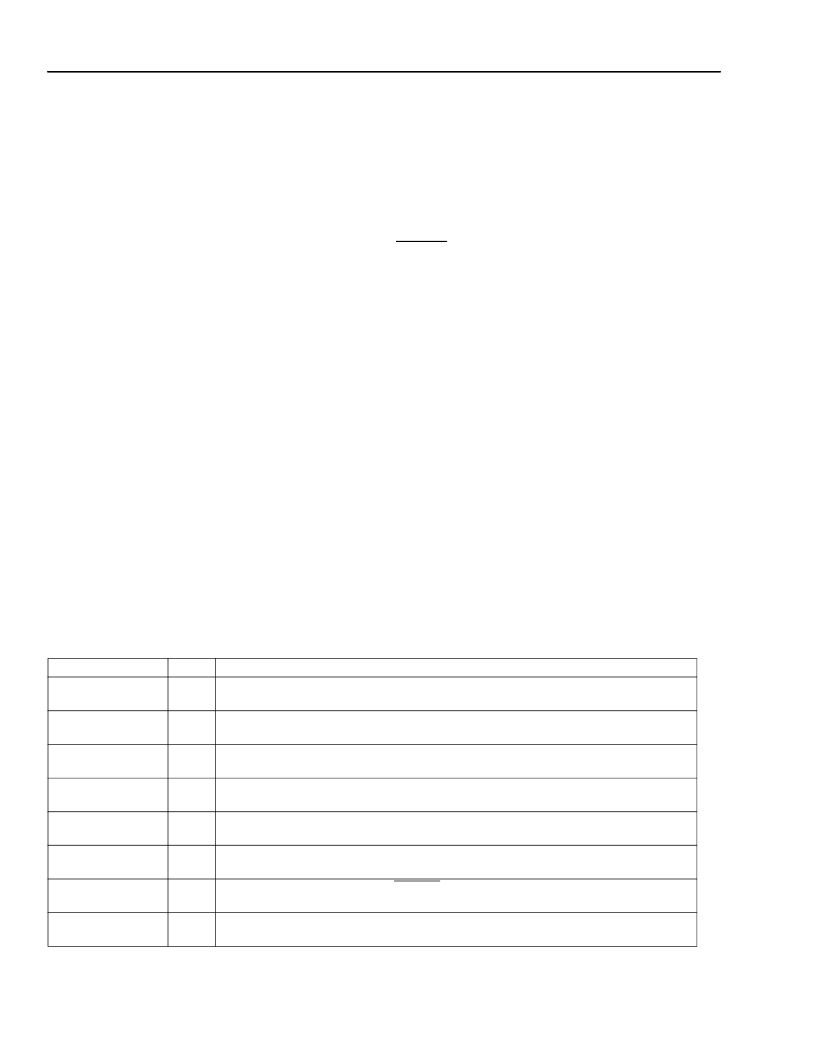- 您現(xiàn)在的位置:買(mǎi)賣(mài)IC網(wǎng) > PDF目錄371179 > T8102A H.100/H.110 Interface and Time-Slot Interchangers PDF資料下載
參數(shù)資料
| 型號(hào): | T8102A |
| 英文描述: | H.100/H.110 Interface and Time-Slot Interchangers |
| 中文描述: | H.100/H.110接口和時(shí)隙Interchangers |
| 文件頁(yè)數(shù): | 66/112頁(yè) |
| 文件大小: | 1408K |
| 代理商: | T8102A |
第1頁(yè)第2頁(yè)第3頁(yè)第4頁(yè)第5頁(yè)第6頁(yè)第7頁(yè)第8頁(yè)第9頁(yè)第10頁(yè)第11頁(yè)第12頁(yè)第13頁(yè)第14頁(yè)第15頁(yè)第16頁(yè)第17頁(yè)第18頁(yè)第19頁(yè)第20頁(yè)第21頁(yè)第22頁(yè)第23頁(yè)第24頁(yè)第25頁(yè)第26頁(yè)第27頁(yè)第28頁(yè)第29頁(yè)第30頁(yè)第31頁(yè)第32頁(yè)第33頁(yè)第34頁(yè)第35頁(yè)第36頁(yè)第37頁(yè)第38頁(yè)第39頁(yè)第40頁(yè)第41頁(yè)第42頁(yè)第43頁(yè)第44頁(yè)第45頁(yè)第46頁(yè)第47頁(yè)第48頁(yè)第49頁(yè)第50頁(yè)第51頁(yè)第52頁(yè)第53頁(yè)第54頁(yè)第55頁(yè)第56頁(yè)第57頁(yè)第58頁(yè)第59頁(yè)第60頁(yè)第61頁(yè)第62頁(yè)第63頁(yè)第64頁(yè)第65頁(yè)當(dāng)前第66頁(yè)第67頁(yè)第68頁(yè)第69頁(yè)第70頁(yè)第71頁(yè)第72頁(yè)第73頁(yè)第74頁(yè)第75頁(yè)第76頁(yè)第77頁(yè)第78頁(yè)第79頁(yè)第80頁(yè)第81頁(yè)第82頁(yè)第83頁(yè)第84頁(yè)第85頁(yè)第86頁(yè)第87頁(yè)第88頁(yè)第89頁(yè)第90頁(yè)第91頁(yè)第92頁(yè)第93頁(yè)第94頁(yè)第95頁(yè)第96頁(yè)第97頁(yè)第98頁(yè)第99頁(yè)第100頁(yè)第101頁(yè)第102頁(yè)第103頁(yè)第104頁(yè)第105頁(yè)第106頁(yè)第107頁(yè)第108頁(yè)第109頁(yè)第110頁(yè)第111頁(yè)第112頁(yè)

62
Lucent Technologies Inc.
Advance Data Sheet
November 1999
H.100/H.110 Interfaces and Time-Slot Interchangers
Ambassador T8100A, T8102, and T8105
2 Architecture and Functional Descrip-
tion
(continued)
2.7 Error Registers
The devices have five error registers:
I
CLKERR1 [0x28]
I
CLKERR2 [0x29]
I
CLKERR3 [0x2C]
I
CKW [0x2B]
I
SYSERR [0x2A]
When programming the clock registers, writing to CKW
and CKS should be programmed last.
These are the clock error, watchdog enable, and sys-
tem error registers. The CLKERR1 register is used to
indicate failing clocks, and the CLKERR2 indicates
whether the failure is permanent or transient in nature.
If the clocks fail, i.e., disappear or momentarily drop
out, then corresponding bits in both registers will be
set. If the clock is reestablished, i.e., a transient error,
then the T bit(s) will clear, but the E bit(s) will remain
set. All of the E bits are ORed together and drive the
CLKERR pin.
The clocks listed in Table 58 are sampled by the
16.384 MHz internal clock. Effectively, each clock has
a watchdog. If the clock is switching, the watchdog
clears. If the clocks stop, then the watchdog sets the
appropriate E and T bits. If the clock is re-established,
then the E bits remain stuck, but the T bits clear with
the watchdog. Since fallback is triggered on the E bits,
a transient clock can force a fallback. The CT_C8A and
CT_C8B watchdogs sample both rising and falling
edges at a 32.768 MHz sample rate (crystal oscillator
input multiplied by 2) in order to meet the ECTF H.110
specification of detecting a missing received rising
edge within 35 ns. The /C16+, /C16-, /C4, C2, SCLK,
SCLKX2 watchdog does not have this ECTF H.110
specification. Each clock is divided down to 1 MHz and
are monitored for a loss of signal at 1 MHz.
The CT_FRAMEA, CT_FRAMEB, /FR_COMP
CT_NETREF1, and CT_NETREF2 watchdog circuitry
is simply a counter. If there is an 8 kHz input on
CT_NETREF, for example, every rising edge of the
8 kHz triggers an internal counter. This counter counts
up to some value. If the terminal count is reached, an
error will be reported. The circuitry does not look at the
input signal CT_NETREF for some polarity. The
assumption is, if the counter reached terminal count
there is no CT_NETREF. If there was a CT_NETREF,
the counter would not have reached terminal count
because the counter would have been reset.
CT_NETREF 1 and 2 are reported if there is no switch-
ing on CT_NETREF for 125 μs. If CT_NETREF is set to
a frequency other than 8 kHz, the error bits NRE and
NRT should not be used to monitor for a clock failure.
Table 58. CLKERR1 and CLKERR2: Error Indicator and Current Status, 0x28 and 0x29
Table 58 describes both CLKERR1 and CLKERR2.
Symbol
CAE
CAT
CBE
CBT
CFE
CFT
C16E
C16T
C42E
C42T
SCE
SCT
SC2E
SC2T
NRE
NRT
Bit
7
Description
CA
=> Reports failures on CT_C8A or /CT_FRAMEA.
6
CB
=> Reports failures on CT_C8B or /CT_FRAMEB.
5
CF
=> Reports failures on /FR_COMP
4
C16 => Reports failures on /C16+ or /C16–.
3
C42 => Reports failures on /C4 or C2.
2
SC
=> Reports failures on SCLK.
1
SC2 => Reports failures on
SCLKX2
.
0
NR
=> Reports failures on CT_NETREF1 or CT_NETREF2. 8 kHz only.
相關(guān)PDF資料 |
PDF描述 |
|---|---|
| T8105A | H.100/H.110 Interface and Time-Slot Interchangers |
| T8100 | H.100/H.110 Interface and Time-Slot Interchanger |
| T8110 | Version History |
| T8301 | T8301 Internet Protocol Telephone Phone-On-A-Chip⑩ IP Solution DSP |
| T8302 | T8302 Internet Protocol Telephone Advanced RISC Machine (ARM) Ethernet QoS Using IEEE 802.1q |
相關(guān)代理商/技術(shù)參數(shù) |
參數(shù)描述 |
|---|---|
| T810-400B | 制造商:STMICROELECTRONICS 制造商全稱:STMicroelectronics 功能描述:HIGH PERFORMANCE TRIACS |
| T8105A | 制造商:AGERE 制造商全稱:AGERE 功能描述:H.100/H.110 Interface and Time-Slot Interchangers |
| T810-600B | 功能描述:雙向可控硅 8A TRIACS RoHS:否 制造商:STMicroelectronics 開(kāi)啟狀態(tài) RMS 電流 (It RMS):16 A 不重復(fù)通態(tài)電流:120 A 額定重復(fù)關(guān)閉狀態(tài)電壓 VDRM:600 V 關(guān)閉狀態(tài)漏泄電流(在 VDRM IDRM 下):5 uA 開(kāi)啟狀態(tài)電壓: 保持電流(Ih 最大值):45 mA 柵觸發(fā)電壓 (Vgt):1.3 V 柵觸發(fā)電流 (Igt):1.75 mA 最大工作溫度: 安裝風(fēng)格:Through Hole 封裝 / 箱體:TO-220AB |
| T810-600B | 制造商:STMicroelectronics 功能描述:TRIAC 8A 600V D-PAK |
| T810-600B-TR | 功能描述:雙向可控硅 8A TRIACS RoHS:否 制造商:STMicroelectronics 開(kāi)啟狀態(tài) RMS 電流 (It RMS):16 A 不重復(fù)通態(tài)電流:120 A 額定重復(fù)關(guān)閉狀態(tài)電壓 VDRM:600 V 關(guān)閉狀態(tài)漏泄電流(在 VDRM IDRM 下):5 uA 開(kāi)啟狀態(tài)電壓: 保持電流(Ih 最大值):45 mA 柵觸發(fā)電壓 (Vgt):1.3 V 柵觸發(fā)電流 (Igt):1.75 mA 最大工作溫度: 安裝風(fēng)格:Through Hole 封裝 / 箱體:TO-220AB |
發(fā)布緊急采購(gòu),3分鐘左右您將得到回復(fù)。